 Website:
Trelleborg Marine and Infrastructure
Website:
Trelleborg Marine and Infrastructure
Group: Trelleborg
Catalog excerpts
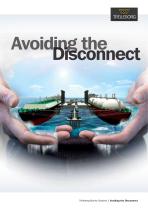
Trelleborg Marine Systems | Avoiding the Disconnect
Open the catalog to page 1
Executive Summary The use of liquefied natural gas (LNG) is now a mainstream, commercial reality, as the demand for energy continues to rise. With natural gas being a reliable, clean burning fossil fuel and one that is in plentiful supply, it has become a truly viable, global resource. To maximize the opportunities offered by natural gas, Floating LNG (FLNG) projects are increasingly being considered as the optimal project configuration, both for liquefaction and regasification. However, with these complex projects comes the need to re-examine docking, mooring and fendering solutions in...
Open the catalog to page 2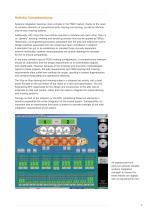
Holistic Considerations Systems integration becomes more complex in the FSRU market, thanks to the need to combine elements of conventional jetty mooring and docking, as well as offshore ship-to-ship mooring systems. Additionally, with more than two entities required to interface with each other, there is no “generic” docking, mooring and fendering solution that can be applied to FSRUs. Historically, civil engineering practices associated with the jetty and traditional marine design practices associated with the vessel have been considered in isolation. A precedent has yet to be established...
Open the catalog to page 3
Class and Regulations In terms of the regulations on design requirements for the three components, Marine Classification Societies, such as ABS, Lloyds, BV, DNV and RINA are focused on the FSRU and traditionally treat an FSRU project as a shipbuilding activity. As such, they provide design review and approval, oversight during construction and undertake hull and machinery surveys to assure compliance with a view to ensuring vessels fit for purpose as ships. Although these organizations have specific requirements from a material and design standpoint for the mooring system hardware, Class...
Open the catalog to page 4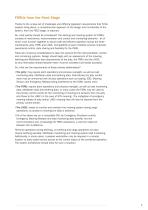
FSRUs from the Feed Stage Thanks to the unique set of challenges and differing regulation requirements that FLNG projects bring about, a comprehensive approach to the design and functionality of the system, from the FEED stage, is required. So, what exactly should be considered? The docking and mooring system for FSRUs consists of mechanical, instrumentation and control and monitoring elements - all of which must function together to assure safe and efficient operation across the three constituents: jetty, FSRU and LNGC. Compatibility at each interface ensures improved operational control,...
Open the catalog to page 5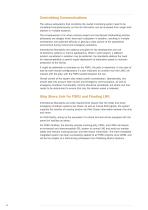
Centralizing Communications The various subsystems that constitute the overall monitoring system need to be considered comprehensively, so that all information can be accessed from single work stations in multiple locations. The consequences of on-shore process project and counterpart shipbuilding practice philosophy are designs which treat each subsystem in isolation, resulting in multiple workstations and potential difficulty in gaining a clear picture of the operational environment during normal and emergency situations. International Standards now address principles for the development...
Open the catalog to page 6
Mechanical Measures Physically, a compact footprint for the mooring equipment on the FSRU is necessary, to save valuable deck space and simplify the under-deck reinforcement requirements. High salt-spray ingress protection is also required for mechanisms, load cells, capstan motors and electrical control boxes. Mooring Capacity Quick Release Hooks (QRHs) are an essential part of the docking and mooring system. However, we’ve seen a disconnect between the civil engineering EPC and the ship designers in the consistent specification of QRH Safe Working Load (SWL). This can potentially mean...
Open the catalog to page 7
Maintenance Considerations The semi-permanent nature of the FSRU to jetty mooring typically means that the Quick Release Hooks are not operated as frequently as they would be at a conventional terminal, so special attention needs to be paid to using a low maintenance hook design to ensure that the release function operates properly when required. In many cases of semi-permanent mooring, jetty mooring lines may incorporate short chain tails which may terminate on board the FSRU within chain stoppers. In this case, load monitoring becomes critical in managing the FSRU mooring. Mooring Lines...
Open the catalog to page 8
Fender Retrieval Systems for STS The effective deployment of fenders will be a “mission critical” operation for Ship to Ship (STS) berthing. Fender deployment systems require a number of special considerations relating particularly to operational safety, Factors of Safety against failure, operational redundancy and damaged state integrity. The above issues are currently not adequately addressed by Class Rules or design codes specific to fender handling machinery. The use of offshore crane codes in determining design load criteria in our view provides a better fit to ensure an adequate level...
Open the catalog to page 9
Conclusion With the growing prevalence of FSRU projects, it’s essential that a more holistic approach is taken to docking and mooring systems, in order to pre-empt potential operational design problems. Learning from an industry leader, we will use the example of the work that we undertook with a major energy company, which is leading the way in considering the regasification terminal and its companion FSRU holistically and gives us an example of how docking and mooring systems might become more aligned in future. One challenge that had to be overcome in this project was the amount of data...
Open the catalog to page 10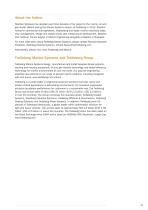
About the Author Stephen Woolway has devoted over three decades of his career to the marine, oil and gas sector. Before joining the Marine Systems division of Trelleborg in 2012, Stephen worked in commercial ship operations, shipbuilding and repair, marine machinery sales, ship management, design and related shore side infrastructure development. Stephen also holds an honors degree in Marine Engineering alongside a Masters in Business. For more information about Trelleborg Marine Systems, please contact Richard Hepworth, President, Trelleborg Marine Systems, richard.hepworth@trelleborg.com...
Open the catalog to page 11All Trelleborg Marine and Infrastructure catalogs and brochures
-
SafePilot brochure
20 Pages
-
Docking & Mooring
88 Pages
-
Pneumatic Fender infographic
1 Pages
-
Pneumatic Fenders brochure
28 Pages
-
Fender Application Design Manual
88 Pages
-
Multipurpose and Tug Fenders
44 Pages
-
Rolling Fenders and Safety
18 Pages
-
AutoMoor Brochure
24 Pages
-
Fender Systems
86 Pages
-
DynaMoor
20 Pages
-
Bollards
28 Pages
-
Solid SmartFender Factsheet
2 Pages
-
Ship-Shore Links Factsheet
4 Pages
-
SmartDAS Factsheet
2 Pages
-
TRELLEBORG DYNAMOOR
4 Pages
-
SmartDock ® Display Board
4 Pages
-
Surface Buoyancy
24 Pages
-
SmartMoor Series II
7 Pages
-
Performance Monitoring
3 Pages
-
Universal Safety Link
3 Pages
-
TRELLEBORG’S Tugger Winch
2 Pages
-
LNG Infographic
8 Pages
-
SafePilot User Guide
30 Pages
-
Safepilot SmartPort System
16 Pages
-
Combined ESDS & SSL
3 Pages
-
Ship Shore Link System
3 Pages
-
Emergency Shutdown Link
3 Pages
-
Floating Fenders
48 Pages
-
Prelude LNG
1 Pages
-
AutoMoor Datasheet
4 Pages
-
SafePilot CAT XT System
2 Pages
-
Whitepaper - Correction Factors
10 Pages
-
Mini Guide - Foam Fenders
5 Pages
-
Buoy Range Table
2 Pages
-
Hawser Hooks
6 Pages
-
Guide - Fenders
8 Pages
-
Barometer Report 3
16 Pages
-
Barometer Report 2
7 Pages
-
lload monitoring software
2 Pages
-
lload monitoring systeme
5 Pages
-
Remote Release System
6 Pages
-
Capstans
4 Pages
-
Accessories
10 Pages
Archived catalogs
-
Docking and mooring
2 Pages






















































































